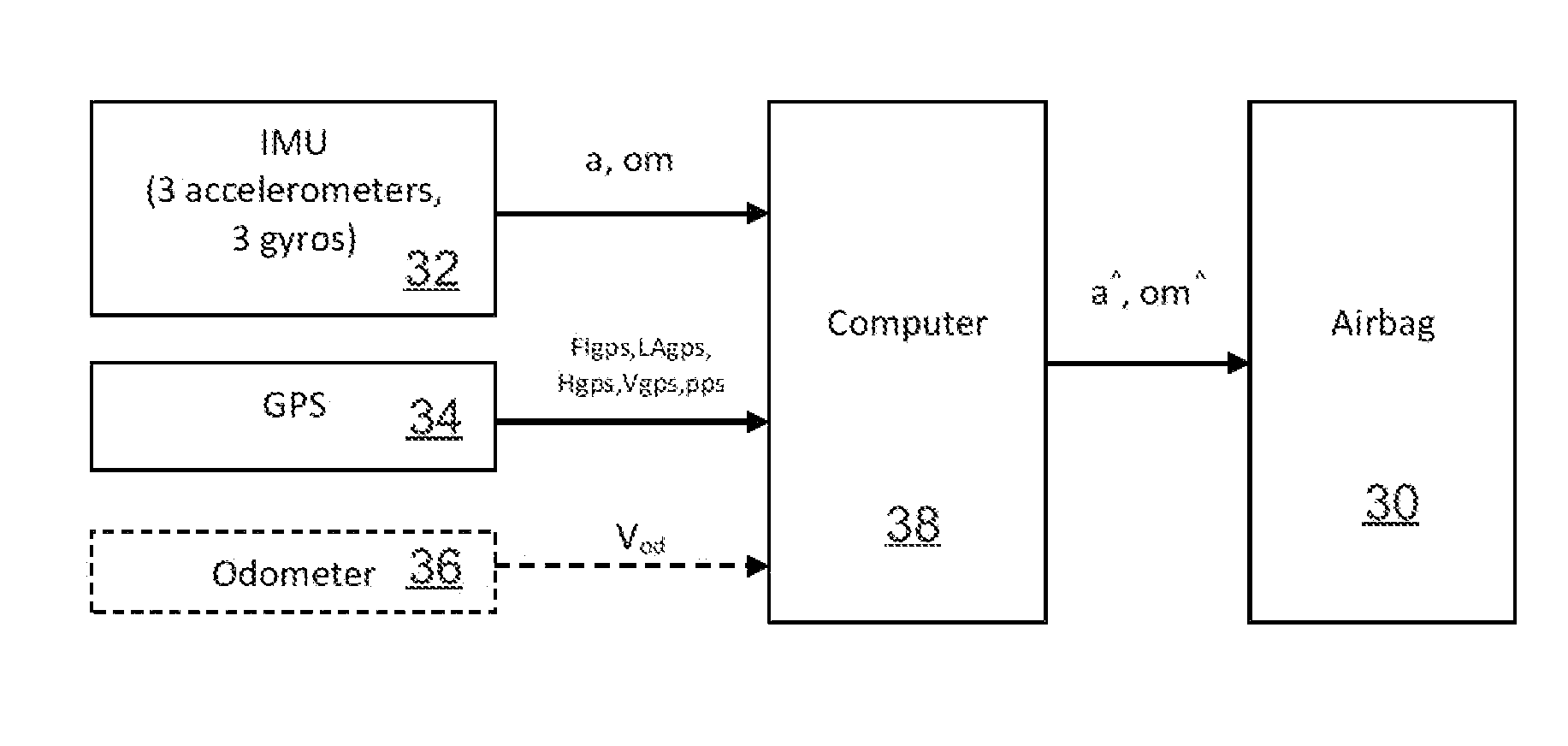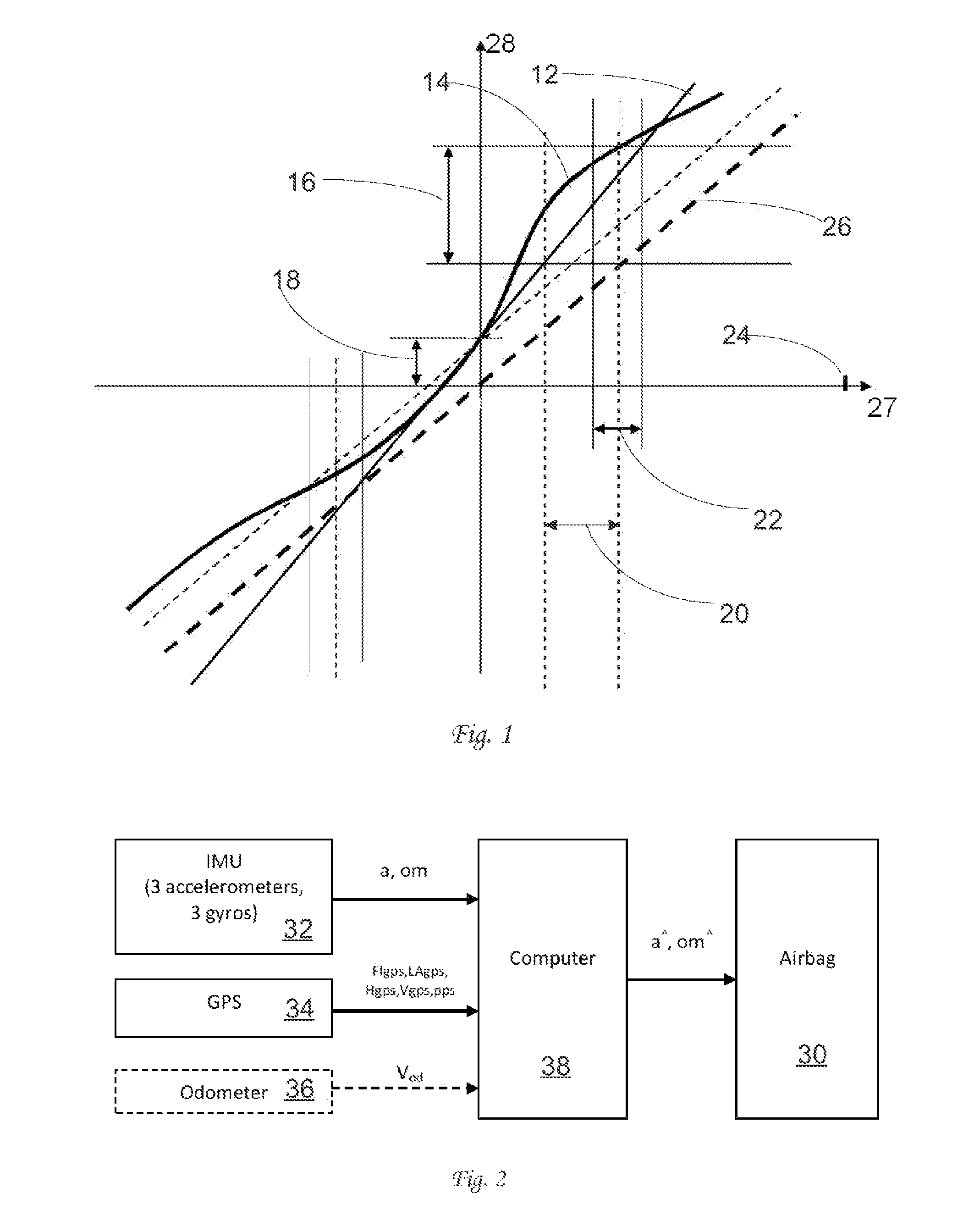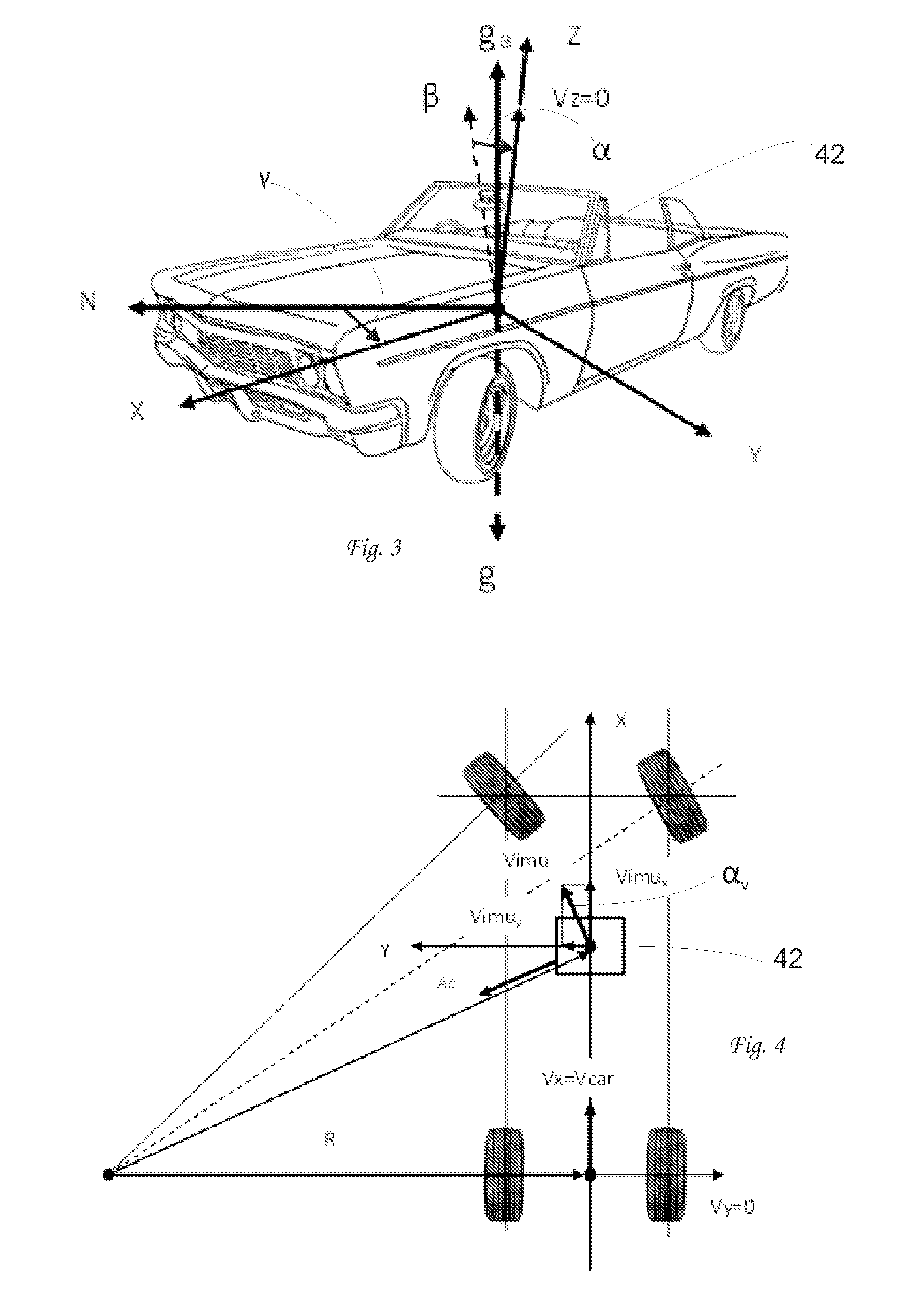Crash sensor systems utilizing vehicular inertial properties
a sensor system and vehicle inertial property technology, applied in the field of electronic crash sensor systems, can solve the problems of increasing the increasing the cost and complexity of the accelerometer and sensor software design, and the mechanical structure of the accelerometer to change geometrically as a function of time and/or temperature, etc., to achieve the effect of simplifying the system design, reducing the loss of inertial device accuracy, and improving the accuracy of position chang
- Summary
- Abstract
- Description
- Claims
- Application Information
AI Technical Summary
Benefits of technology
Problems solved by technology
Method used
Image
Examples
Embodiment Construction
1. Introduction
[0042]An object of the present invention is to provide an IMU crash and rollover sensor. To do this, the basic engineering solutions for a GPS-corrected IMU crash and rollover sensor primarily for low-price mass produced cars is presented herein. This objective is accomplished by:
[0043]1) Using the Airbag lumped control circuit, the airbag ECU, comprising a control system with an inertial measurement unit, IMU, mounted at a central sensing point instead of the currently widely used distributed sensors and circuit for mounting crash sensors at the expected impact points of the vehicle. This currently standard system involves expensive and unreliable communication lines and connectors for transmitting signals to the central decision-making unit.
[0044]2) Manufacturing IMUs in accordance with the mass-production MEMS technology at a cost of a few dollars per unit. An IMU can comprise 3 accelerometers and 3 gyroscopes or more generally, a plurality of accelerometers and / or...
PUM
 Login to View More
Login to View More Abstract
Description
Claims
Application Information
 Login to View More
Login to View More - R&D
- Intellectual Property
- Life Sciences
- Materials
- Tech Scout
- Unparalleled Data Quality
- Higher Quality Content
- 60% Fewer Hallucinations
Browse by: Latest US Patents, China's latest patents, Technical Efficacy Thesaurus, Application Domain, Technology Topic, Popular Technical Reports.
© 2025 PatSnap. All rights reserved.Legal|Privacy policy|Modern Slavery Act Transparency Statement|Sitemap|About US| Contact US: help@patsnap.com



